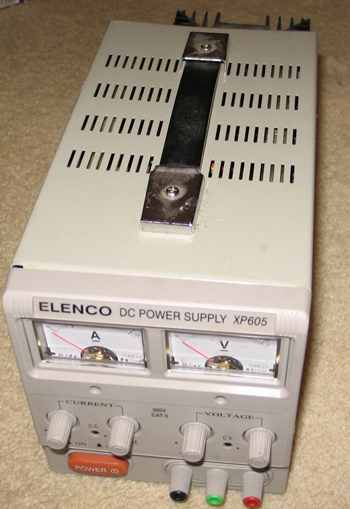Anodize Aluminum at Home with Everyday Materials

Anodizing is a process that builds up a very thin but strong protective layer on the surface of a non-ferrous metal. It is achieved using chemical/electrical oxidization, and is most commonly done on aluminum , but occasionally also seen on titanium, silver and other metals. If you’ve ever seen one of those blue or red Maglite flashlights (and I’m sure you have), you’ve seen anodized aluminum. The color comes from dyes that are used after the anodizing process to give it color before sealing the surface layer tightly.
Although aluminum anodizing is often done for large-scale commercial uses, the process is reproducible for smaller home-brew projects using easy to find chemicals and containers (like plastic coolers). The best set of DIY instructions around come from Ron Newman – he has a detailed breakdown of each step, and even sells the solutions and kits to get you started. Here’s a simple overview:

• Soak aluminum part in cleaning solution
• Etch part in caustic lye solution
• Desmut (done if etched or for certain aluminum alloys)
• Connect part to positive electrode of power source, with cathode (negative electrode) submersed in anodizing solution. Submerse for one hour.
• Dye
• Seal part using nickel acetate sealer
Of all the steps, the most involved is setting up the power supply to charge the solution and cause the anodizing process to occur. A battery charger is a simple tool that can work here, although Newman’s writeup says to use a somewhat pricey rectifier to help control the current to the proper level to get decent results. Other anodizing pages such as from Steve Mass and Bryan Pryor suggest that the battery charger can be difficult to monitor and control – they prefer using a dedicated DC power supply instead.
Caswell plating sells supplies for anodizing – check with them for materials.

On a larger, industrial scale, full factories are used to anodize oversized pieces of metal for building purposes. The general process is the same though.
Now, lets say you need to remove the anodizing for some reason or other (perhaps you don’t want your paintball gun to look like a pink and blue easter egg anymore). The system is pretty straightforward:
You can strip off the existing anodized layer from any anodized part by placing the part in a caustic solution for an hour or so. Just mix a few tablespoons of lye and water in a plastic container. Wear eye protection and rubber gloves for this procedure!! Place the part in the solution and monitor its progress.
The Lye will dissolve the old anodized layer, about .001″ thick. It takes a while for it to start breaking through the layer. It’s a little slow at first. The first ten minutes or so not much action will be seen. Bubbles and smut will rise up as an indicator of its progress.
Or, you can use a parts washer like this video shows:
And, as mentioned above, you can use this technique on other metal types. Here’s a demonstration of anodizing a bar of silver:
Finally, one more page with a full rundown on the anodizing process: DIY aluminum anodizing
Now, go anodize some stuff! Car parts, bike parts, water bottles, pizza peels. Let your imagination run wild, just like the wild colors you can use.
